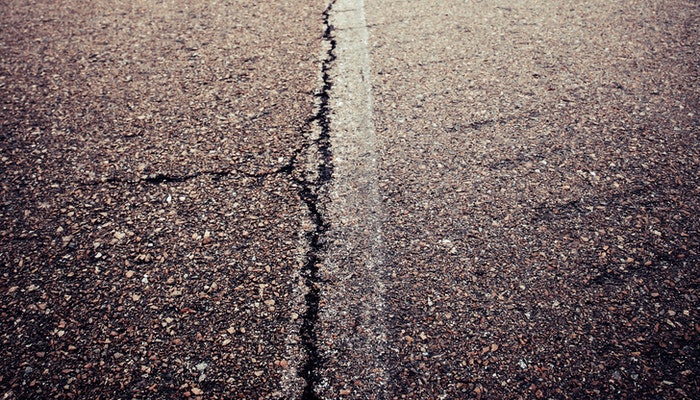No asphalt driveway can ever be 100% immune to cracks. Factors beyond human control, such as adverse weather conditions and general aging of the material, can lead to deep cracks on asphalt pavements. Crack filling is an effective and efficient solution to repairing all the driveway cracks and improving the pavement’s appearance, functionality and longevity.
Crack filling is a common asphalt surface maintenance practice that minimizes damage and prevents minor cracks from worsening. By preventing the penetration of outside elements inside the existing cracks, crack filling protects the driveway and helps maintain its curb appeal.
Common Crack Filling for Driveways Crack Repairs
You can find crack fillers made of a variety of materials out there. While some fillers offer temporary crack relief, others yield lasting results. Common crack filler materials include coal tar, asphalt emulsion, epoxy, and acrylic.
Coal tar crack filling
Coal tar is a thick, dark liquid derived from coal, and it is an economical option to fill driveway cracks. The viscous coal tar is mixed with water before it can be used to fill in cracks — the water improves its consistency, facilitating easy application.
Coal tar has numerous drawbacks, though. It poses a threat to both humans and the environment, apart from being susceptible to UV degradation. Exposure to coal tar is hazardous and can even cause skin cancer. It is also harmful to the environment, as it emits toxic volatile organic compounds (VOCs).
Asphalt-based crack filler
 Asphalt-based crack fillers are made from rubberized asphalt emulsion; they are poured hot and solidified once cold. These crack fillers are efficient alternatives to coal tars, as they are water-resistant, durable, and environment-friendly.
Asphalt-based crack fillers are made from rubberized asphalt emulsion; they are poured hot and solidified once cold. These crack fillers are efficient alternatives to coal tars, as they are water-resistant, durable, and environment-friendly.
Asphalt-based crack fillers are often sold in bulk and used to seal the entire driveway. They are also available as filler ropes that sit neatly inside the cracks. The ropes are further melted using a blowtorch to cover the crack entirely.
Unfortunately, asphalt-based crack fillers are also vulnerable to harmful UV rays, and they can even result in unappealing stains on the driveways.
Epoxy and acrylic crack fillers
Epoxy and acrylic are other common materials used as crack fillers. They are considered the most superior method of repairing driveway cracks, as their inherent flexibility makes them ideal for repairing asphalt surfaces, which expand and contract as per the temperature.
Both acrylic and epoxy offer solutions to all the problems that accompany other crack fillers. The former are immune to UV damage and offer long-lasting results — while acrylic lasts for five years, epoxy lasts for approximately ten years. Both these efficient crack fillers are oil and gas-resistant. Due to the multiple benefits they offer, they are a costlier crack repair solution.
Conclusion
Crack filling is an effective method for repairing various asphalt cracks, excluding crocodile cracks that require special treatment. For lasting results, allow crack fillers to dry completely. Most crack fillers typically take anywhere between 2 and 4 hours to dry. That said, refrain from driving over freshly repaired driveways for the next 24 to 48 hours.
Address
Commonwealth Paving, 136 Outerloop, Louisville, Kentucky 40214
Phone: 502-459-7283, Fax: 502-456-2678
Opening Hours
| Monday | 9:00 AM – 5:00 PM |
| Tuesday | 9:00 AM – 5:00 PM |
| Wednesday | 9:00 AM – 5:00 PM |
| Thursday | 9:00 AM – 5:00 PM |
| Friday | 9:00 AM – 5:00 PM |
| Saturday | Closed |
| Sunday | Closed |







